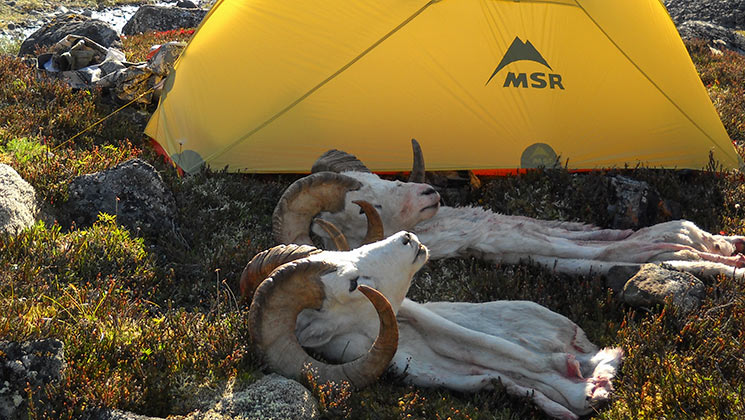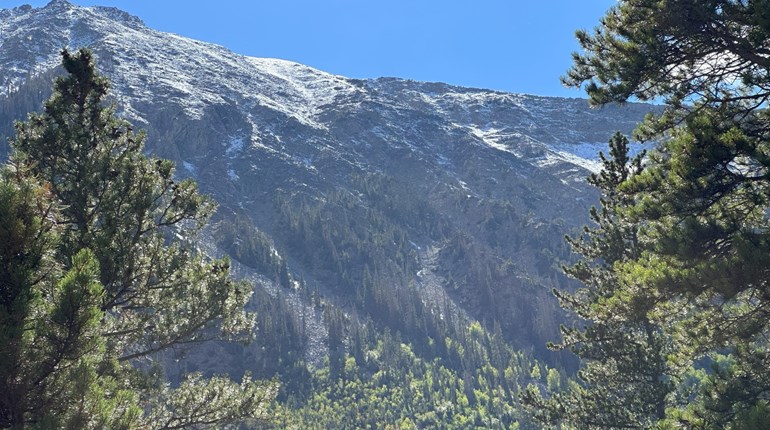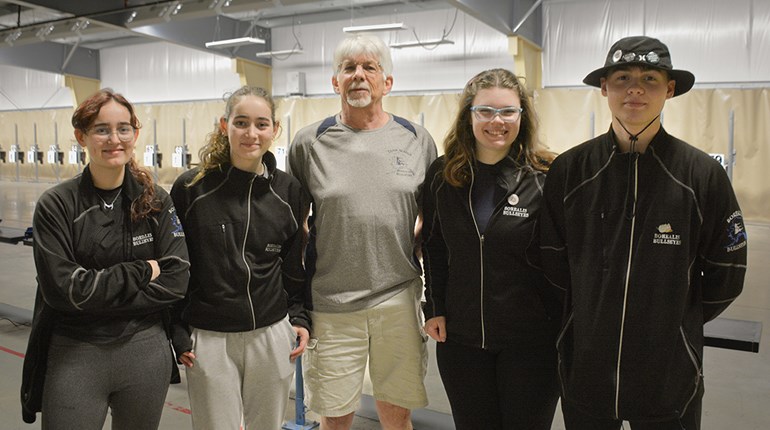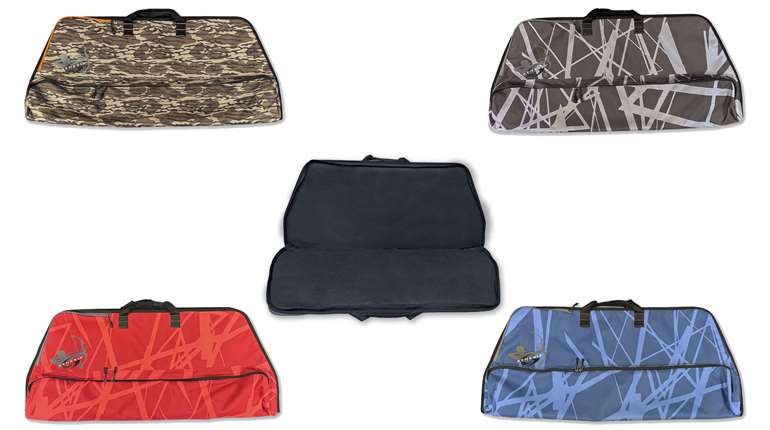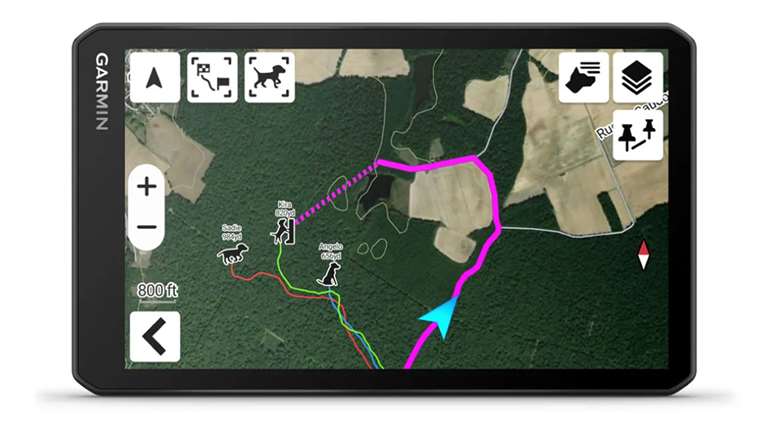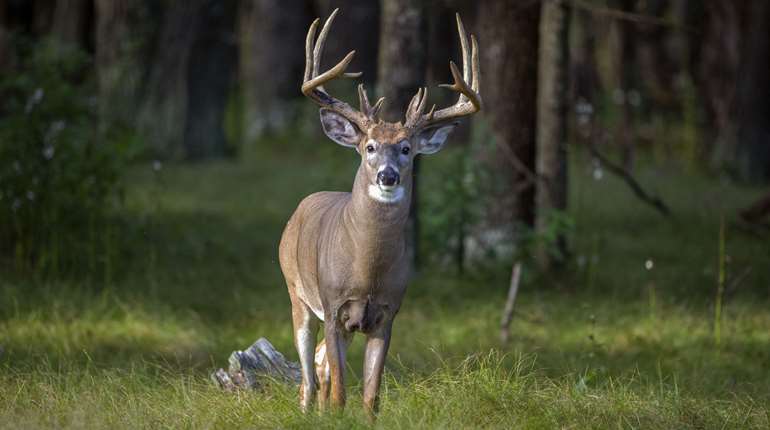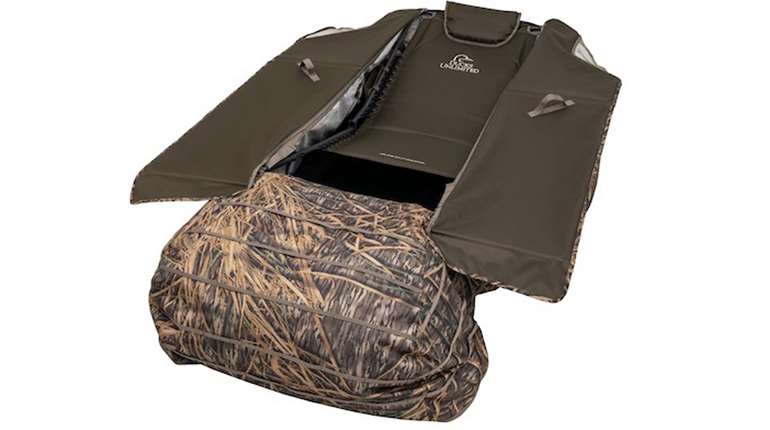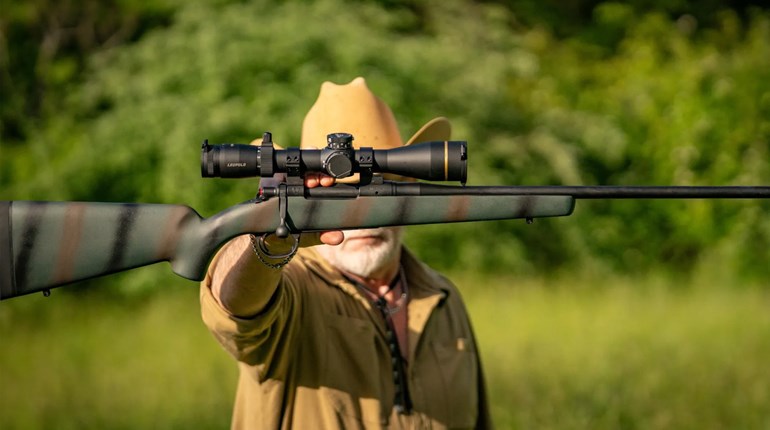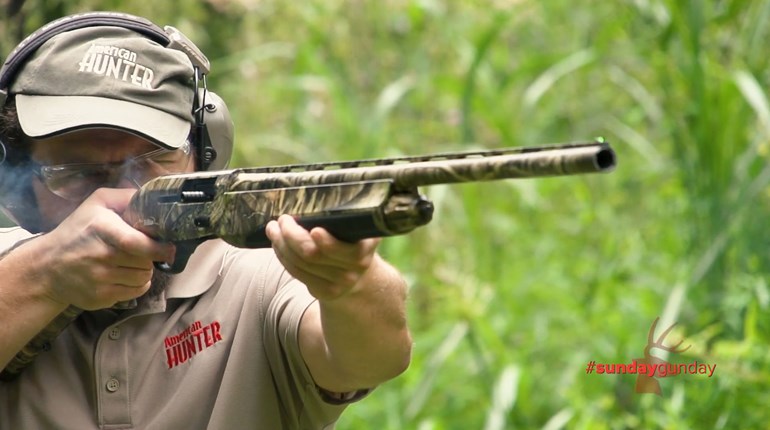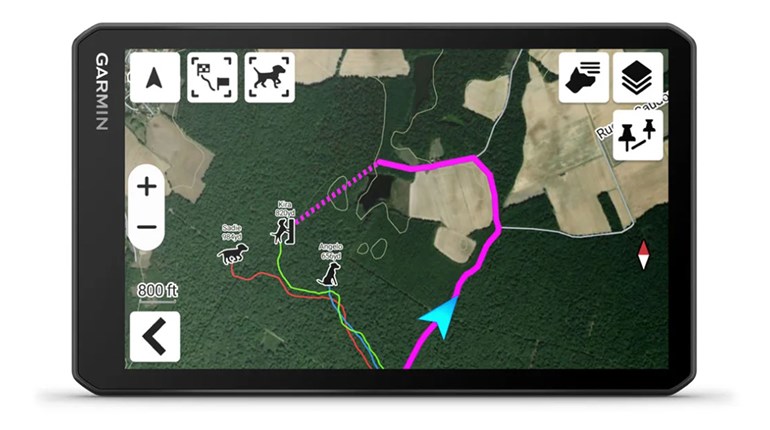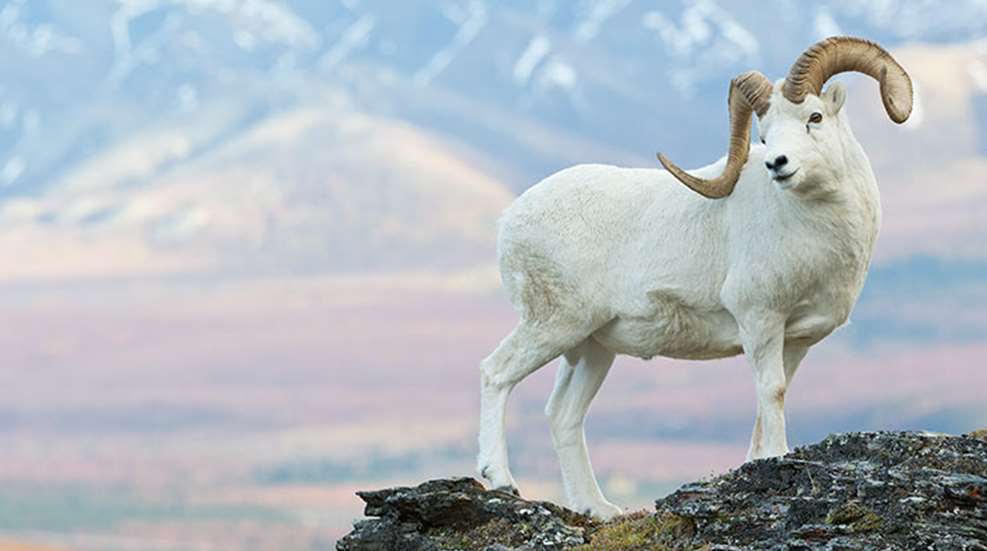
It had been a long hunt. After 12 days of almost constant rain, snow and fog, and after waking up shivering uncontrollably every couple of hours from the unseasonably “cool” temperatures, I was near the breaking point. Stalk after stalk had gone bust when several nice rams simply disappeared into the mist. Our seven days of food was stretched dangerously thin. We were motivated only by what we might see up the next canyon, and the one after that. Then, in the last hour of light, on the last day we would be able to hunt and still cover the 26 miles back to the airstrip, my ram materialized through the falling snow. One last push, and I had him. By the time we stumbled into the airstrip at 3 a.m. two days later, we had spent 14 cold, wet days in the field, eaten all of our food and walked 105 miles.
There are a lot of adjectives that one may use to accurately describe sheep hunting. These words can range from challenging to miserable, exhilarating to devastating. The one you will never hear is easy. Sheep hunting is not for everyone, but there’s a certain type of hunter who is driven to the mountains, just because they are there.
Wild sheep, especially Dall sheep (in my somewhat biased opinion), are probably the most handsome and regal animals in North America. It’s no surprise that they garner as much attention as they do. A Dall ram is no doubt near the top of many a hunter’s wish list, but only a relative few ever hold a set of those translucent golden horns in their hands. Still, thousands of hunters dream of their chance to come off the mountain loaded heavy.
We see snapshots from a sheep hunt, and naturally want to be there. We see the rugged mountains, stream crossings, views that Bob Ross himself couldn’t recreate, and we’re drawn to that, or at least drawn to the idea of it. We are drawn to the adventure of hunting some of the most wild and untouched land on the planet, places we visit but are not made for us.
The idea of a sheep hunt is appealing to many, but the realities of a sheep hunt quickly separate the cream from the milk. The rigors of the hunt will quickly show whether a hunter loves the idea of sheep hunting or is truly a sheep hunter. It’s easy, as an armchair quarterback, to say, “Boy, I’d love to do that.” But when you’re leaning on your trekking poles sucking wind, your legs on fire, and you’re not even halfway up the mountain, or you are stumbling back into camp by headlamp after another fruitless day, you’ll know if you really want to be there or not.
There is only one way to find out if you are cut out for sheep hunting, and that is to go. I’ve met grown men, who on their worst day could mop the floor with me, who simply give up. I also know some pushing 70 who still go every year. There is no formula or test to determine if you’re up to the challenge; it’s something you must really want.
Getting Real
You first must accept that “comfortable” is a relative term. To put it mildly, you must be ready to endure various levels of discomfort and keep going. You will live entirely out of your backpack, sleeping on the ground, and often will be cold, wet, hungry and exhausted, all at the same time. You may have to spend hours hunkered under a rock to stay out of a driving rain, or wake up to 12 inches of snow on your tent in mid-August. You might have to spend a night away from your tent and sleeping bag because a ram pins you down, and you may make several thousand-foot climbs only to have the ram you are after vanish into thin air. Some forms of hunting could be referred to as “casual,” but not sheep hunting. It will push you beyond what you thought your limits were, and you will question whose bright idea it was to ever get involved in it.
A self-guided trip will give you what I would call the “full experience” of a sheep hunt. That’s not to say a guided trip is easy by any means, but we’ll get to that later. To hunt sheep on your own (which I’m fortunate to have the privilege to do as an Alaska resident) puts you in a world of being totally dependent on yourself, both for your safety and the success of your hunt.
Being a successful DIY sheep hunter means being proficient in a number of skills and tasks. You could be the best game spotter or shooter on the planet, but if you can’t carry a 50- to 60-pound pack for days you won’t fare too well. You could be fit as a mountain goat, but if you’re a sloppy stalker you may go home empty-handed. Your planning, packing, camping, glassing, ram judging, stalking and shooting skills must be on-par. In fact, they must be more than just proficient: You must be able to combine and adapt your skills efficiently.
Your sheep hunt will usually begin with a long walk. By long, I don’t mean a couple of miles. I mean days. Over my 13 years of sheep hunting, I’ve averaged about one to two days and 10-20 miles of walking just to get to where I start hunting. Sometimes the walking is on relatively flat, river bottom-ground, but often, it’s much less forgiving. Even on trips when you are dropped off by airplane, you can still expect to cover some serious ground before seeing rams.
From here on out, you will live behind the glass. You’ll wake up in the morning, hurting in places you didn’t know existed, force yourself to unzip your sleeping bag and put on your stiff, often frozen boots, and glass. You’ll make breakfast, and try to wolf it down while it’s still warm, and glass some more. You will stuff all the essentials for hunting and spending a night or two away from the tent in your pack, and glass some more. Then you start walking again. Every time you stop for a breather, you are immediately behind your binocular again. Every distant white sheep you see initiates the same routine: stop, dig the spotting scope and tripod out of your pack, set them up and then try to determine if the ram is worth a closer look (sometimes from several miles away). If he happens to be, you plan a stalk then get close enough to determine if he is a shooter. If he isn’t, you start the whole process over again, until you stumble back into camp, exhausted. You boil water and prepare your dinner, putting it down just in time to zip up your bag and do it again.
A sheep hunt can be an awful lot like Groundhog Day. A few days of the mental and physical beating you will inflict upon yourself will be enough to make you wonder what the hell you were thinking.
The mental aspect of a sheep hunt, especially for an unguided hunter, is probably the most difficult to overcome. You always wonder: “Did I pick the right canyon to hunt? Where will I find my next water fill-up?” Every decision must be calculated, and you will always wonder if you made the right one. Sometimes things work out quickly, but sometimes they don’t. After six or seven fruitless days of playing this game, a warm bed at home begins to sound very appealing. More than a few would-be sheep hunters have succumbed to the siren song of home and hamburger.
This is the point where those who like the idea of sheep hunting are weeded out from those who love sheep hunting. If you’re the latter, you keep going, leave it all on the mountain and don’t give up until your ram is on the ground or you’re out of time. If you keep going, and refuse to give up, eventually you will see that ram. Things can turn around in the blink of an eye. More than once, I’ve gone from accepting that my hunt is just about over to stuffing a sheep in my backpack at the last minute. You’ll push yourself through one more leg- and lung-burning climb, peek over the ridge and see your ram in range. You squeeze off the perfect shot, and in an instant the mental game is over, and the real work begins.
If you thought going in and hunting was tough, packing out a sheep is even tougher. Here’s where you will really push your limits. You’re usually faced with the option of splitting up gear and meat into two, 50- to 60-pound loads or one, 100- to 120-pound load. Over the years, I’ve found that despite having to walk three times as far, the former is the better option. If you want to keep hunting, you need to take care of your body, and wearing a 100-plus-pound pack on your back for days is a certain taste of misery that will significantly up your chances of serious injury. This is where things get very physical. A first-time sheep hunter will have to push himself harder than he ever could have imagined. But when the mental strain is replaced by reflections of an accomplished goal, it doesn’t seem quite so terrible.
Although I believe guided hunters are often missing out on the “full experience,” that’s not intended to knock them. A registered guide is required by law for nonresident sheep hunters in Alaska. Besides, just because you are on a guided hunt doesn’t mean it will be easy. Many of the pleasantries of a DIY hunt will still be there. If you want the pleasure of carrying all your own gear, food and sheep on the way out, your guide will probably be more than happy to accommodate your desire. Usually (and varying from guide to guide), you will have plenty of assistance in this department. But you will still need to keep up, and ultimately, your success depends on your drive to keep going.
Probably the biggest difference between a guided and unguided hunt is the mind game. On a guided hunt, your guide assumes most of the pressure. Sure, you will still be pushed to the limit, but you’re able to depend on the guide’s savvy to figure out some of these issues, and to teach you hard-learned lessons the easy way.
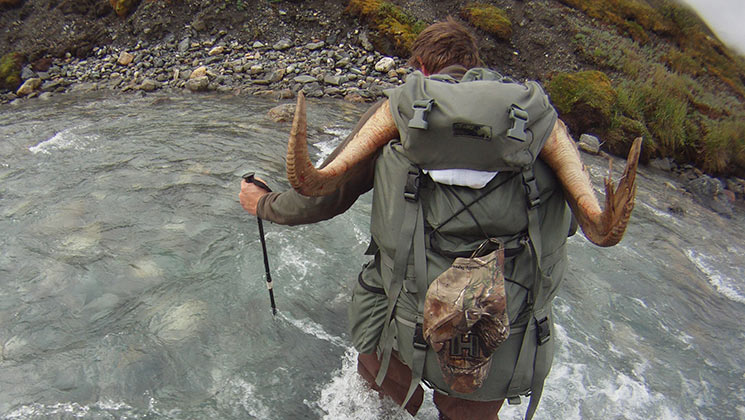
Why We Love It
After such a stiff lecture about the miseries of sheep hunting, one naturally wonders, “Why do it?” Yes, sheep hunting can be brutally painful, but with a high price comes great reward. For sheep hunters, the experience is worth the cost. Words cannot adequately describe the challenge, and the fulfillment that comes from giving it your all on the mountain is no easier to explain when you bring back horns and meat. It isn’t about any one thing, but a concoction of ingredients rooted deep in the fiber of our beings.
We love the sheep. Naturally, hunting them is motivated by the desire to kill one. We would be lying to ourselves if we didn’t admit that killing the animal wasn’t our goal. There is nothing on Earth like holding a ram’s horns in your hands. But that is more of a symbol, a microscopic portion of the entire experience, a conduit channeling all our hard work and experiences into a tangible, accomplished goal. It’s a blink of the eye. Those who truly love sheep hunting keep going, even if they don’t kill a ram.
We love the mountains, too. As long as mountains have been around, there have been those who have a need to be in them, just because they are there. You will get your fill on a sheep hunt. Despite the rigors, simply being in that country somehow taps into your soul. You see and experience a simple, natural beauty Shakespeare himself wouldn’t be able to capture in ink. You earn a front-row seat to the balance of beauty and brutality of nature in some of the wildest places on Earth. More than just seeing it, though, we become participants in the natural cycle of life and death in the few places that are indifferent to our presence. Those places were there long before us, and will remain long after we turn to dirt. The opportunity to experience just a sliver of it is extremely valuable to a sheep hunter.
The challenge, while difficult, is worth every bead of sweat. Taking on and overcoming tremendous adversity rewards one with a powerful self-fulfillment. The greater the challenge, the greater the fulfillment—and you will be hard-pressed to find a more challenging hunt. The pain, sweat and hunger ends, and you are left with irreplaceable memories and the satisfaction of knowing you gave it your all, no matter the result. It’s not about proving yourself to others, but showing yourself that you still have what it takes—that’s also part of what makes sheep hunters try themselves against the mountains, chasing that high of deep, personal satisfaction.
A sheep hunter’s drive is much more complex than a single motivating factor. Every time I try to explain it to someone who hasn’t been there, it feels like trying to explain what colors look like to someone without sight. There are plenty of adjectives to describe it, but the full picture remains incomplete. A sheep hunt is something that truly must be experienced to be understood. Sheep hunting stories provide a glimpse of what it’s like, but they are just that, a glimpse. They are the author’s attempt to convey something that cannot fully be explained, just enough to draw our imaginations to the mountains and adventures that await.
It wouldn’t be fair to fail to tell you what you are in for, though. If you are up to the challenge, you will return to civilization with your own story, and possibly a lifelong obsession.
